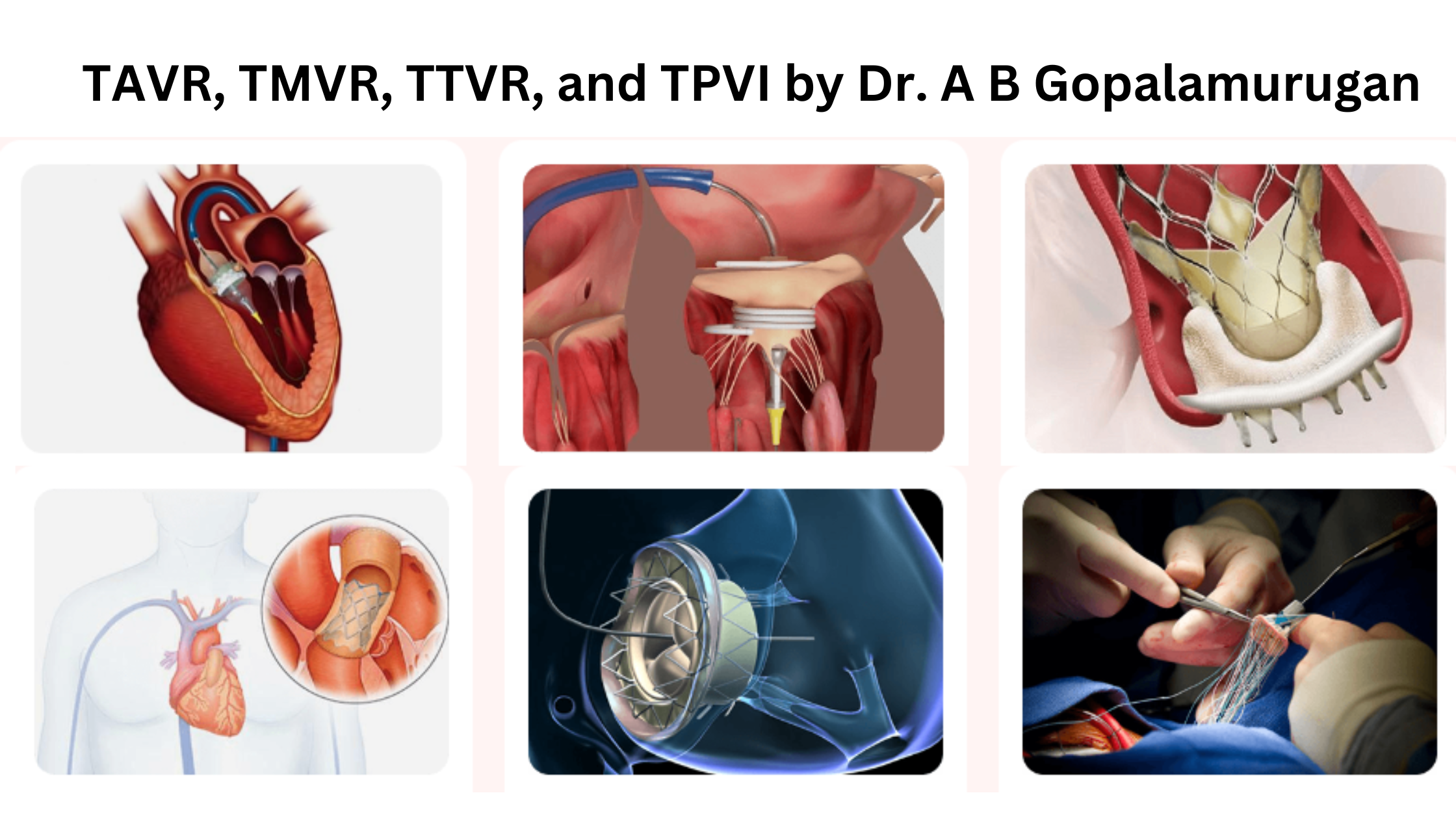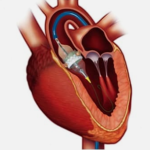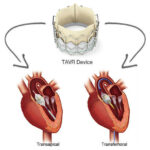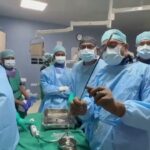 20 June, 2024
20 June, 2024
TAVR, TMVR, TTVR, and TPVI by Dr. A B Gopalamurugan
Introduction
The field of cardiology has seen remarkable advancements over the past few decades, particularly in the realm of structural heart disease. Minimally invasive techniques have transformed the treatment landscape for various valvular heart conditions, offering patients safer and more effective alternatives to traditional open-heart surgery. Among these innovative procedures are Transcatheter Aortic Valve Replacement (TAVR), Transcatheter Mitral Valve Repair (TMVR), Transcatheter Tricuspid Valve Repair (TTVR), and Transcatheter Pulmonary Valve Implantation (TPVI). In India, Dr. A B Gopalamurugan is a renowned expert in these procedures, providing exceptional care and expertise. This guide provides a detailed overview of each procedure, highlighting their significance, benefits, and the conditions they treat.
Transcatheter Aortic Valve Replacement (TAVR)
Overview
TAVR, expertly performed by Dr. A B Gopalamurugan in India, is a minimally invasive procedure used to replace a diseased aortic valve in patients with severe aortic stenosis who are at high or intermediate risk for open-heart surgery. It involves threading a catheter through the femoral artery (or another access point) to deliver a new valve to the heart.
Procedure
- Preparation: Patients undergo imaging studies (CT, echocardiography) to assess the anatomy and suitability for TAVR.
- Catheter Insertion: A catheter is inserted through a small incision, usually in the groin.
- Valve Deployment: The new valve, crimped onto a balloon or self-expanding stent, is advanced to the aortic valve site.
- Placement: The new valve is deployed, pushing the old, diseased valve aside, and begins to function immediately.
Benefits
- Reduced recovery time compared to open-heart surgery.
- Lower risk of complications, especially in high-risk patients.
- Effective symptom relief and improved quality of life.
Indications
- Severe symptomatic aortic stenosis.
- Patients who are not suitable candidates for traditional valve replacement surgery.
Transcatheter Mitral Valve Repair (TMVR)
Overview
TMVR, a specialty of Dr. A B Gopalamurugan, is designed to treat mitral regurgitation, a condition where the mitral valve does not close properly, causing blood to flow backward into the left atrium. The most common TMVR technique involves the use of the MitraClip device.
Procedure
- Preparation: Imaging studies, including transesophageal echocardiography (TEE) and cardiac catheterization, are conducted.
- Access: A catheter is inserted through a vein in the leg and guided to the heart.
- Clip Deployment: The MitraClip device is attached to the leaflets of the mitral valve, improving closure and reducing regurgitation.
Benefits
- Minimally invasive, avoiding the need for open-heart surgery.
- Quick recovery and shorter hospital stay.
- Effective in reducing symptoms and improving heart function.
Indications
- Severe symptomatic mitral regurgitation.
- Patients who are high-risk candidates for surgical mitral valve repair or replacement.
Transcatheter Tricuspid Valve Repair (TTVR)
Overview
TTVR, performed by Dr. A B Gopalamurugan in India, is a newer procedure aimed at treating tricuspid regurgitation, where the tricuspid valve fails to close properly, leading to backward blood flow into the right atrium. The procedure often involves the use of devices like the TriClip.
Procedure
- Preparation: Detailed imaging (echocardiography, CT scans) to evaluate the tricuspid valve anatomy.
- Access: A catheter is inserted through the femoral vein.
- Device Deployment: The repair device is positioned to clip the tricuspid valve leaflets, improving valve closure.
Benefits
- Minimally invasive approach.
- Reduced symptoms and improved heart function.
- Suitable for patients who are not candidates for open-heart surgery.
Indications
- Significant tricuspid regurgitation.
- Patients with high surgical risk.
Transcatheter Pulmonary Valve Implantation (TPVI)
Overview
TPVI is used to treat pulmonary valve disorders, such as pulmonary valve stenosis or regurgitation, typically in patients with congenital heart disease who have previously undergone surgery. Dr. A B Gopalamurugan is a leading expert in TPVI in India.
Procedure
- Preparation: Pre-procedural imaging to assess the pulmonary valve and right ventricular outflow tract.
- Access: A catheter is inserted through the femoral vein.
- Valve Deployment: The new pulmonary valve is delivered via catheter and deployed within the existing valve or conduit.
Benefits
- Minimally invasive, avoiding repeated open-heart surgeries.
- Short recovery period.
- Improved symptoms and right ventricular function.
Indications
- Dysfunctional pulmonary valve in patients with congenital heart disease.
- Patients who have previously undergone pulmonary valve surgery.
FAQs
Q: Who is a candidate for TAVR, TMVR, TTVR, or TPVI?
A: Candidates are typically patients with valvular heart disease who are considered high-risk for traditional open-heart surgery. Detailed imaging and evaluations are required to determine suitability.
Q: How long is the recovery period for these procedures?
A: Recovery times are generally shorter than for open-heart surgery. Most patients can return to normal activities within a few weeks.
Q: What are the risks associated with these procedures?
A: While minimally invasive, risks include bleeding, infection, valve leakage, or stroke. However, these risks are generally lower compared to traditional surgery.
Q: How do I prepare for a consultation with Dr. A B Gopalamurugan?
A: Gather your medical history, current medications, and any previous cardiac imaging or test results. Be prepared to discuss your symptoms and treatment goals.
Q: What follow-up care is needed after these procedures?
A: Regular follow-up visits, echocardiograms, and possibly other imaging tests will be necessary to monitor the new valve’s function and overall heart health.
Conclusion
The advent of transcatheter valve therapies like TAVR, TMVR, TTVR, and TPVI represents a significant leap forward in the treatment of valvular heart diseases. These minimally invasive procedures, expertly performed by Dr. A B Gopalamurugan in India, offer hope to patients who are high-risk surgical candidates, providing effective symptom relief and improved quality of life with shorter recovery times. As technology and techniques continue to evolve, the future of structural heart disease treatment looks promising, with even more advanced and less invasive options on the horizon.
For more detailed information about these procedures or to find out if you are a candidate, consult Dr. A B Gopalamurugan or a specialized heart center.









